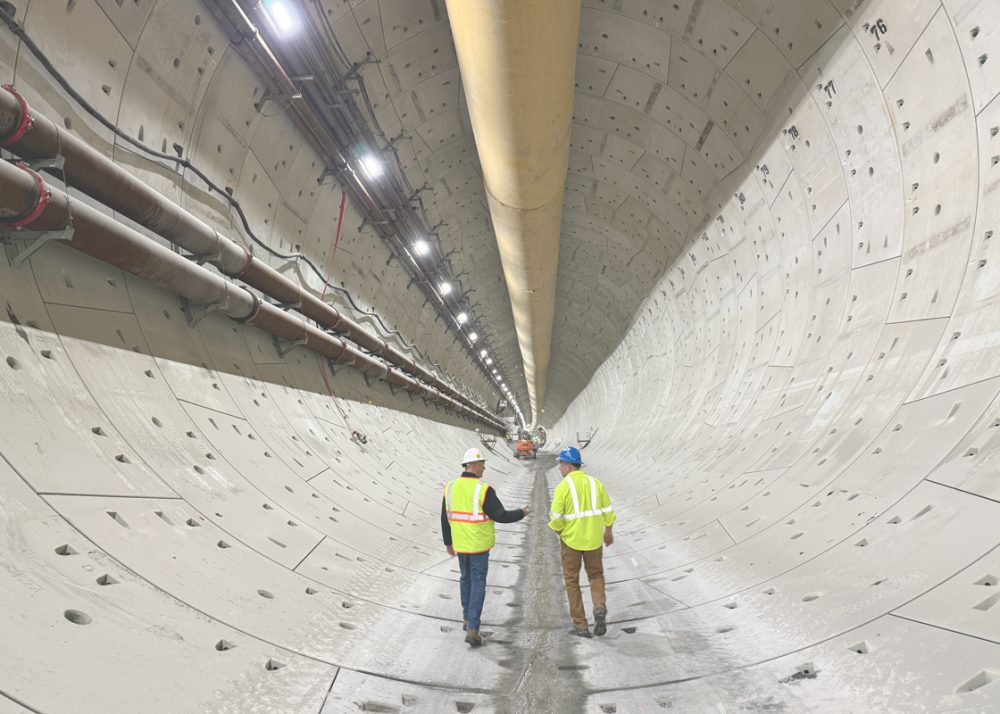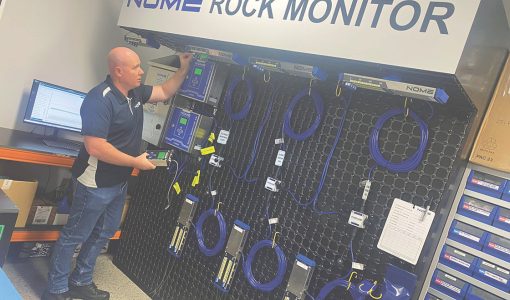This article was originally published by Tunnel Business Magazine
The Hampton Road Bridge Tunnel Expansion in southeastern Virginia is a landmark project that includes the construction of twin 8,000-ft tunnels under the shipping channel. It is noteworthy as it is being constructed with the largest variable-density TBM, and it is only the fourth bored highway tunnel in the United States to date (and the second largest). To build the project, the owner – the Virginia Department of Transportation – selected Hampton Roads Connector Partners (HRCP), a Joint Venture between Dragados USA, Flatiron, Vinci Grand Projects and Dodin Campenon.
In order to ensure that the TBM and its supporting systems run smoothly, modern data and communications systems are a must. For this complicated project, being built in soft soils under a major shipping canal using a large-diameter TBM, HRCP team turned to Strata Worldwide. Strata employed its StrataConnect solutions. StrataConnect is a suite of high-tech solutions spanning
- VoIP and radio voice communication
- Primary and secondary end-to-end Ethernet data connectivity
- Wi-Fi
- Location tracking
- Environmental monitoring and gas detection
To get an insight into how to select and implement data and communications systems, TBM met with Gonzalo Casco Rodríguez, TBM Project Engineer, Flatiron-Dragados., Tom Michaud, Chief Technology Officer, Strata Worldwide, and Rob Albinger, Vice President and General Manager, Strata Safety.
TBM: How do you go about selecting the communications systems for the project?
Gonzalo – The first thing we need to do is determine the requirements for the particular job, and then we contact our suppliers to see how they can meet the requirements. In this case we selected StrataConnect from Strata Worldwide.
From a safety perspective, one of the most important aspects is redundancy. We don’t want a situation where we lose our communications system for even a second. The system controls things like the pumps that transport material in and out of the tunnel. That is critical in using a variable-density TBM like we’re on this project, to ensure that the system is working efficiently.
Another critical component is the radio. We knew we wanted to have several channels. In the beginning, we were looking at a regular radio system, but Strata provided a digital track system, instead of a standard LMR leaky feeder system that we would normally use. It has a total of five frequencies, and it has been working very well for us.
We also needed mine phones as a final means of communication in the event that everything else fails. This is a system that is proven in the mining industry and on other TBM projects too, and we wanted to have it on this project.
For data communication, Strata created a double loop fiber system with a series of switches that in case one fiber is broken or we have a problem, then the switch will change automatically to the other fiber.
In regards to data, we are also using gas monitoring to track seven different gases, including CO2, O2, H2S, CH4 and others. Safety requirements dictate that we have gas monitors every 500 meters within the tunnel. IThis system also enables us to monitor air flow at specific points within the tunnel.
TBM: How does the size of the tunnel impact the decisions and requirements for data and communications systems?
Gonzalo - Normally people think that the bigger the tunnel, the more difficult it is for data and communications, but it is actually the opposite. We recently had a tunnel project in Canada where we were building a 3.7-meter tunnel, and getting a leaky feeder signal through a tunnel that size is not easy to manage.
Tom – Yes, when we’re in tunnels were individual pieces of machinery can take up a large portion of the entry it can present a problem. This is particularly the case in tunnels in the 3- to 4-meter range. Manned service vehicles, for example, can block most of the entry and make it difficult for signals to pass. In this case, the tunnel is large enough that no single machine or vehicle can block the signal.
Gonzalo – Even though there are fewer complications in a larger tunnel, we still needed to conduct an exhaustive test to determine where to place the nodes and the leaky feeder cable. We made our final determination after conducting a site visit.
Rob – What we did in this case was break the project down into 500-meter sections. We built out a redundant 500-meter network, and then we would duplicate it as we went along. Once we were able to perfect the first approach, we followed that same approach and repeated it throughout as the tunnel continued to advance.
TBM: What are the steps you need to take to ensure that the data and communications system is going to be able to meet all of your requirements?
Rob – Typically what happens is a client will contact us with an outline of what they need. We'll then send out information to allow them to understand what the capabilities of our systems are. We schedule calls or face-to-face meetings to give them a thorough explanation of what our system can do for them and how it can help them manage their productivity and their safety.
From there, they'll give us feedback on their particular needs. In some cases, clients may just need a simple two-way voice communication network. In this case, the client needed the full suite of services including dedicated switches to certain operations, notably the TBM and the pumps; a third redundant loop using our DigitalBRIDGE Plus+ network that gives them the capability of two-way voice as well as another backup for data; Wi Fi access points; gas detection; two-way page phones; and tracking. We can provide any or all of these services depending on the needs of the project. We’re able to listen to what the customers are asking and based on the discussions, we present them with potential solutions and let them make their final decisions.
Please click here to continue reading the full story: Tunnel Business Magazine - Strataconnect Helps HRCP Stay on Track



